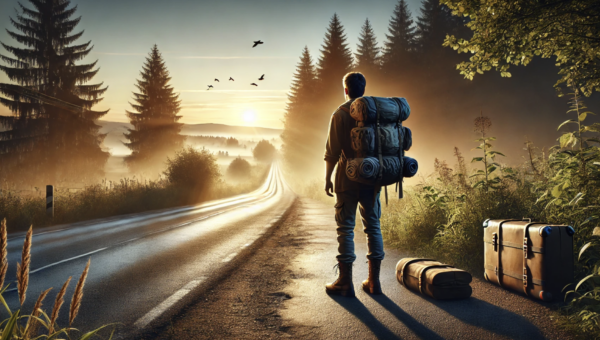So, you’ve decided to write a book—fantastic! But let’s face it: the path to becoming an author is rarely a smooth ride. It’s more like a rollercoaster with unexpected loops and occasional dips. Writing a book is more than just an accomplishment; it’s a journey of self-expression and creativity. It’s not just about putting words on paper; it’s about weaving your thoughts and imagination into something truly meaningful.
From the moment you start brainstorming your book idea, you might find yourself wrestling with a host of challenges. Writer’s block, for instance, is like hitting a brick wall where your creative flow suddenly comes to a screeching halt. It can be incredibly frustrating, leaving you feeling stuck and ready to throw your pen out the window. And even when you do manage to start writing, finding your unique voice, crafting compelling narratives, and developing well-rounded characters can be quite the feat.
But fear not—we’re here to walk you through every step of your writing journey. We’ll explore 7 essential book writing tips that will help you set up your ideal writing space, conquer writer’s block and self-doubt, and explore the habits and techniques of successful authors. We’ll dive into crafting captivating stories and characters and cover essential steps like editing and navigating the publishing landscape. By the end of this article, you’ll be ready to embark on your own writing adventure with confidence and excitement.

The Book Writing Journey
Writing a book is more than just an exercise in creativity; it’s a detailed and evolving journey that turns a simple idea into a published masterpiece. It all starts with a spark of inspiration—an idea that sets the writer’s imagination ablaze. From there, the idea undergoes a transformation through various stages, including brainstorming, outlining, drafting, revising, and editing, before reaching the final step: publishing.
The journey begins with brainstorming and conceptualizing your book’s theme, plot, and characters. This foundational work is key to setting up a solid structure for your story. Next, you’ll craft an outline, a detailed roadmap that guides your narrative and keeps your storytelling on track.
Once your outline is in place, it’s time to dive into drafting. This is where you turn your ideas into written words, developing scenes, dialogues, and descriptions. It’s often the most labor-intensive part of the process, requiring sustained effort and dedication.
With your draft complete, you’ll move into the revision phase. This is where you refine your story, enhance clarity, and improve the overall quality of your writing. Expect to go through several rounds of edits to tighten your narrative and polish your prose.
Finally, you’ll tackle professional editing to fix any grammatical, syntactical, and formatting issues, preparing your manuscript for publication. The publishing phase will depend on whether you opt for traditional publishing, self-publishing, or another route.
From Concept to Publication: The Author’s Journey
Turning a book idea into a published work is an exciting yet demanding adventure. It begins with a spark of inspiration—often drawn from personal experiences, observations, or other books—that starts to take shape through research and development.
As your idea evolves, you’ll start the writing process, transforming your thoughts into words on a page or screen. This stage tests your commitment and discipline, demanding regular writing sessions to keep the momentum going.
With the manuscript in hand, the next step is navigating the editing and publishing stages. If you’re going the traditional route, this involves querying agents, submitting your manuscript, and potentially facing rejections before finding a publisher. On the self-publishing path, you’ll handle editing, design, and marketing responsibilities yourself.
Why a Structured Approach Matters
Having a structured approach to writing your book is crucial for several reasons. It provides a clear roadmap from start to finish, helping you stay focused and organized throughout the process. This organization makes it easier to manage the workload by breaking it into manageable tasks and stages.
A structured plan also aids in time management. By setting deadlines for each phase, you can maintain a steady pace and fend off procrastination and writer’s block.
Moreover, a structured approach ensures that all essential elements—like character development, plot progression, and thematic consistency—are thoroughly addressed. This thoughtful development increases the chances of your manuscript’s success once published.
In essence, using a structured approach can greatly improve both the quality of your book and the efficiency of your writing process, leading to a more rewarding publishing experience.
The Power of a Writing Coach: Guiding Your Journey to Success
Navigating the world of writing can feel like embarking on an epic adventure. Having a trusted guide by your side can make all the difference. Enter the writing coach—your personal expert who helps you unlock your full potential and tackle the challenges of the writing process with confidence. Whether you’re struggling to find your voice, battling writer’s block, or simply seeking direction, a book writing coach can offer valuable insights that push you toward success.
A writing coach online provides flexible, tailored support, offering professional advice and motivation at every stage of your writing journey. From brainstorming ideas to refining your manuscript, a writing services consultant ensures you’re on the right path. They’ll guide you through character development, plot structuring, and pacing, all while keeping your personal vision intact. In addition to honing your writing skills, a coach can also help you build sustainable writing habits, keeping you focused and committed to your goals.
Whether you’re in need of assistance with your first chapter or looking for a comprehensive strategy to get through revisions, book creation coach services can offer a much-needed structure to your writing process. A coach doesn’t just help you with the mechanics—they provide a morale boost, too, making the daunting task of writing more manageable and enjoyable.
Including a writing coach in your journey can significantly enhance your book’s overall quality, helping you go from “just an idea” to a finished manuscript that’s polished and ready to shine.

An author preparing to write.
Step 1: Preparing to Write
Before diving into writing your book, it’s essential to set a solid foundation. This preparation phase involves creating the right environment, establishing a routine, and overcoming common obstacles like writer’s block.
Cultivating the Ideal Writing Space
Your writing environment can significantly impact your productivity and creativity. Choose a space that minimizes distractions and enhances focus—whether it’s a quiet room, a cozy corner in a library, or a favorite café. Pay attention to details like lighting, seating, and décor. Consistently writing in the same space can help condition your mind to enter a state of creativity when you settle in.
Establishing a Routine and Setting Goals
A consistent writing routine is key to maintaining progress. Identify when you’re most alert—be it mornings, evenings, or throughout the day—and dedicate that time to writing. Stick to this schedule to build momentum. Alongside your routine, set clear, achievable goals based on word count, pages, or writing time. Specific targets help track progress and stay motivated, but keep them realistic to avoid unnecessary pressure.
Overcoming Writer’s Block
Writer’s block can disrupt your writing flow, but there are strategies to tackle it. Try free writing: set a timer for 10-15 minutes and write continuously without worrying about grammar or structure. This can help unlock creativity. Other methods include brainstorming, mind mapping, or engaging in unrelated creative activities. Keep a journal or app handy for jotting down spontaneous ideas, which can be useful when you feel stuck and need help to overcome writer’s block.
Keeping the Reader’s Perspective
Consider your reader’s interests while writing. Understanding what engages your target audience can shape your narrative. Ask yourself what will intrigue your readers and the emotions you want to evoke. Reading widely in your genre and interacting with readers through writing groups or forums can provide valuable insights and keep you connected to your audience’s preferences.
Step 2: The Art of Actual Writing
With your preparation complete, you’re ready to dive into the actual writing. This stage is where your abstract ideas turn into a tangible narrative. It’s a blend of creativity and discipline, imagination and structure. Let’s explore how to start your writing journey, the importance of the first draft, and how to develop your unique style, while also distinguishing between writing fiction and non-fiction.
The Power of the First Draft
The first draft is your starting point—often rough and imperfect, but crucial for getting your ideas onto the page. Think of it as a creative playground where you can explore and experiment without the pressure of perfection. The goal is to translate your thoughts into words, laying the groundwork for your story, characters, and themes. Remember, this draft is just the beginning. It will undergo significant refining and editing, so embrace its imperfections as a natural part of the creative process.
Tips for Starting Strong
Getting started can be intimidating, but these strategies can help you write with confidence:
- Set Realistic Goals: Start with manageable writing targets to build momentum.
- Embrace Imperfection: Accept that your first draft won’t be perfect. Focus on getting your ideas down.
- Create a Ritual: Develop a pre-writing routine to signal to your brain that it’s time to write.
- Keep an Inspiration File: Collect quotes, images, and ideas that spark your creativity. Use them when you need a boost.
- Write Regularly: Establish a consistent writing habit. The more you write, the more comfortable and confident you’ll become.
Finding Your Writing Style
Developing your unique writing style is a personal journey that balances creativity with structure. Creativity involves experimenting with language, exploring new ideas, and finding your voice. Structure, however, means understanding the conventions of your genre, plotting, and pacing. The most compelling writing styles often blend these elements, combining creative flair with a solid structural foundation.
Fiction vs Non-Fiction: Different Approaches
Writing fiction and non-fiction requires different techniques. Fiction involves crafting imaginary worlds, characters, and plots that captivate readers and transport them to another realm. It’s about storytelling and creativity. Non-fiction, on the other hand, focuses on presenting real-life information, theories, or stories in an engaging manner. It demands thorough research and accuracy, often requiring a clearer, more concise style. Understanding these differences will help you adapt your approach and master the art of writing in your chosen genre.
By embracing these aspects, you’ll be well on your way to transforming your ideas into a polished and compelling manuscript.

Step 3: Crafting Your Book
Transitioning from the initial stages of writing to the crafting phase is a crucial step in bringing your book to life. This phase is where your story’s foundational elements are shaped and polished. It involves key tasks such as writing your first chapter, developing characters and plot, and setting the tone for your narrative. This section will guide you through these essential components, ensuring your story captivates readers from the start and keeps them engaged throughout.
Writing an Engaging First Chapter
Your first chapter is your chance to hook readers and draw them into your story. Start with a captivating hook—whether it’s a unique situation, an intriguing character, or a distinctive narrative voice. This hook should hint at what’s to come and spark curiosity, compelling readers to keep turning pages. The opening should be both engaging and reflective of the overall tone and direction of your book.
Setting the Tone and Establishing the Setting
The first chapter also sets the tone and establishes the setting of your book. The tone—be it suspenseful, humorous, melancholic, or romantic—should align with the genre and nature of your story, shaping reader expectations and emotional engagement. The setting provides the backdrop for your narrative, so paint a vivid picture of your story’s world. Strike a balance between rich descriptions and brevity to immerse readers without overwhelming them with details.
Developing Compelling Characters
Characters are the heart of any story. To make them resonate with readers, they should be well-rounded and believable. Give them distinct traits, personalities, backgrounds, and emotional depth. Your characters should have strengths, weaknesses, desires, and fears that make them relatable. Even if not all details make it into the book, understanding their backstory can enhance their motivations and reactions. Ensure your characters grow and evolve throughout the story to keep readers invested.
Crafting a Captivating Plot
A compelling plot is well-structured with a clear beginning, middle, and end. It should include rising action, conflict, climax, and resolution. Maintain a good pace by balancing fast-paced action with slower, introspective moments that allow for character development. Incorporate plot twists and surprises to keep readers on their toes, but ensure they are plausible within the story’s context. While Planning your plot in advance can provide direction, stay flexible to allow for organic developments as you write.
By focusing on these elements, you’ll create a memorable and engaging book that captures and retains your readers’ attention.
Step 4: The Writing Habits of Professional Writers
Studying the habits and routines of professional writers can provide valuable insights for aspiring authors. This section explores the practices of successful writers, including those on the New York Times bestseller list, and offers practical advice for managing writing sessions while balancing other life responsibilities.
Habits of New York Times Bestselling Authors
New York Times bestselling authors often share key habits that contribute to their success. These writers typically follow a disciplined daily routine, dedicating specific hours solely to writing. They emphasize the importance of writing every day, regardless of inspiration, treating it as a professional obligation rather than a casual activity. Daily goals, whether based on word count, pages, or writing time, are common among these authors. They also highlight the role of persistence, pushing through periods of self-doubt and writer’s block to keep their projects moving forward.
Learning from Renowned Writers Like J.K. Rowling
The journeys of acclaimed authors such as J.K. Rowling offer valuable lessons for emerging writers. Rowling’s experience—from drafting Harry Potter ideas on a train to overcoming numerous rejections—illustrates the power of perseverance and belief in one’s work. Her meticulous approach to world-building, character development, and narrative complexity can serve as a model for aspiring writers. Rowling’s willingness to revise and incorporate feedback also underscores the importance of flexibility and continual improvement in the writing process.
Setting Writing Goals
A common question among writers is how much to write in each session. There isn’t a universal answer, as it depends on personal goals and schedules. Some writers set daily targets, such as 500 to 2000 words or a specific number of pages. The key is to establish realistic goals that fit your writing style and life commitments. Consistently meeting these targets can boost your confidence and create a sense of progress.
Balancing Writing with Other Responsibilities
Balancing writing with other life responsibilities—such as work, family, and social obligations—can be challenging. Effective time management is crucial. Consider setting aside dedicated writing hours or making use of small blocks of time throughout the day. Communicate your writing schedule to family and friends to minimize interruptions. Many writers find that early mornings or late evenings are ideal times for writing when other demands are less pressing. Prioritizing tasks and setting boundaries can help maintain a healthy balance between writing and other aspects of life.
By adopting some of these practices and adapting them to your own routine, you can enhance your writing productivity and maintain a balanced, fulfilling writing life.
Step 5: Progressing Through Your Book
Navigating the journey from your first draft to a polished manuscript involves growth, refinement, and overcoming challenges. This section will guide you through the essential phases of editing and revising, helping you transform your manuscript into a compelling book. We’ll explore the intricacies of the editing process, strategies for dealing with self-doubt, the importance of feedback and revision, and how to incorporate constructive criticism effectively.
From First Draft to Final Draft
Transitioning from a rough draft to a final manuscript is a crucial step in the writing process. Editing is where you enhance your narrative, improve prose, and ensure clarity and coherence. Start with self-editing: read your manuscript critically to refine flow, structure, and language. This may involve cutting unnecessary sections, sharpening dialogue, and ensuring consistency in characters and plot. After self-editing, seek professional help if possible. Professional book editing services can offer expert insights on grammar, punctuation, and stylistic consistency. Embracing this stage is essential for elevating your book’s quality. Our AI-powered editing technology at Spines can streamline this process efficiently and cost-effectively.
Managing Self-Doubt and Staying Focused
Self-doubt is a common hurdle, especially during the editing phase. It’s important to remember that writing is iterative, and perfection doesn’t happen on the first try. Set realistic expectations and recognize the value of constructive criticism. Keep your focus on the end goal: a polished, engaging book. Regular writing and editing sessions, breaks to recharge creativity, and celebrating small achievements can help maintain motivation and focus.
The Value of Feedback and Revision
Feedback is a crucial part of refining your manuscript. It provides new perspectives that you might not see on your own. Engaging with writing groups, peers, or mentors can offer valuable insights into character development, plot structure, pacing, and readability. Be open to feedback, but also discerning. Choose advice that aligns with your vision for the book.
Effectively Incorporating Constructive Criticism
Constructive criticism is a powerful tool for improving your manuscript. Approach it with an open mind and a readiness to enhance your work. Evaluate feedback to identify areas for genuine improvement, but remember that not all criticism will be relevant. Filter and apply feedback thoughtfully, balancing advice with your unique voice and narrative style. Incorporating criticism effectively is about enhancing your story while staying true to your original vision.
By focusing on these elements, you can refine your manuscript into a compelling, polished book ready for readers.

A published book.
Step 6: Finishing Your Book
Completing your book involves crossing the final hurdles with renewed focus and determination. This stage requires overcoming obstacles, staying motivated, handling self-criticism, and preparing for publication. Here’s how to navigate these crucial final steps:
Staying Motivated
Maintaining motivation in the final stretch can be challenging. Try these strategies:
- Set Small Goals: Break tasks into manageable chunks and celebrate each win.
- Revisit Your Inspiration: Remind yourself why you started.
- Visualize Completion: Imagine the satisfaction of finishing.
- Build a Support Network: Connect with fellow writers for encouragement.
- Stick to a Routine: Regular writing times help maintain progress.
Managing Internal Criticism
To handle perfectionism and self-doubt:
- Embrace Imperfection: Early drafts don’t have to be perfect.
- Separate Editing from Writing: Dedicate specific times for each task.
- Accept Minor Flaws: Small imperfections can enhance your story.
- Seek Feedback: Get objective views from trusted peers.
Preparing for Publication
Understand your publishing options:
- Traditional Publishing: Involves working with literary agents and publishers for professional support but can be competitive and slow.
- Self-Publishing: Offers full control over editing, design, and marketing. Platforms like Amazon’s Kindle Direct Publishing are accessible but require effort in promotion.
Innovating Your Self-Publishing Journey with Spines
Platforms like Spines are revolutionizing self-publishing, making it more accessible and streamlined. Spines offers intuitive, AI-driven tools for every step of the publishing process, including copyright protection, AI-powered cover design, comprehensive proofreading, and various formatting options. Additionally, Spines can create audiobooks, catering to the growing demand for audio content. The platform ensures your book is well-crafted and widely distributed through channels like Amazon and Barnes & Noble, providing a seamless route to bringing your story to the world.
Your Publishing Journey Awaits – Start NowOptions between Traditional Publishing and Self-Publishing
Authors today have more publishing options than ever before. Traditional publishing involves working with established publishing houses. This route often requires finding a literary agent to represent you and your work. It offers the advantages of professional editing, design, marketing, and distribution support, but it can be highly competitive and time-consuming.
Self-publishing your book, on the other hand, gives authors complete control over the publishing process, from editing and cover design to marketing and sales. Platforms like Amazon’s Kindle Direct Publishing have made self-publishing more accessible. While it offers greater creative control and potentially higher royalties, it also requires significant effort in marketing and promotion.
Both paths have their merits and challenges, and the choice depends on your personal goals, resources, and the specific needs of your book. Understanding both options will help you make an informed decision on how best to bring your book to your audience.
In the realm of self-publishing, innovative platforms like Spines are revolutionizing the process, making it more accessible and streamlined for authors. Spines simplifies the journey from manuscript to published book with its intuitive, AI-driven tools. It offers a range of services, including copyright protection upon manuscript upload, AI-powered cover design, comprehensive proofreading, and a variety of formatting options.
Additionally, Spines provides the unique feature of creating audiobooks, catering to the growing demand for audio content. The platform ensures that your book is not only well-crafted but also widely distributed, reaching readers across the globe through channels like Amazon and Barnes & Noble. Spines’ approach to self-publishing services is a testament to the evolving landscape of the industry, offering authors a seamless and efficient route to bring their stories to the world.
Step 7: Post-Writing Steps
After completing your manuscript, focus shifts to preparing your book for readers. This phase is crucial for achieving visibility and success. Here’s how to navigate the key post-writing tasks:
Crafting a Strong Query Letter
If you’re pursuing traditional publishing, a compelling query letter is essential. It’s your first opportunity to make a good impression on agents or publishers. Your letter should include:
- A Hooking Synopsis: A brief, engaging summary of your book.
- Author Bio: A concise introduction of yourself and relevant credentials.
- Personalization: Explain why your book is a good match for the agent or publisher.
Ensure your query letter is polished, error-free, and effectively showcases your book’s unique aspects and your skill as a writer.
Marketing and Promoting Your Book
Effective marketing is vital for reaching readers. Engage with the literary community by attending book fairs, festivals, and writer workshops. Build relationships with bookstores and libraries, and join professional writing organizations. For self-published authors, mastering platforms like Amazon Kindle Direct Publishing is key for successful promotion.
Leveraging Social Media and Other Platforms
Social media can significantly boost your book’s visibility. Use platforms such as Facebook, Twitter, Instagram, and LinkedIn to build your author brand, share updates, and interact with readers. Create valuable content, like blog posts, podcasts, or videos related to your book’s theme, to maintain audience interest. Collaborate with bloggers, influencers, and other authors to expand your reach. Additionally, utilize email marketing to send newsletters, book release announcements, and special offers, keeping readers engaged and informed.
By mastering these post-writing steps, you’ll enhance your book’s chance of success and effectively connect with your audience.
Final Thoughts on Beginning a Writing Career
Embarking on a writing career is both thrilling and transformative. It’s a journey that blends creativity with personal development, where each word penned is a step toward self-expression and storytelling. As you start this path, stay true to your vision while remaining adaptable. Embrace rejection as part of the process and use it to fuel your perseverance. Celebrate each milestone, no matter how small, as it brings you closer to your ultimate goal.
The writing world is vast, filled with diverse opportunities and paths. Whether you aspire to be a become a bestselling, a celebrated journalist, or a meaningful contributor in other ways, your unique voice is invaluable. Writing isn’t just a career; it’s a means to share your perspective and create something lasting and impactful. So, take that first step with confidence and let your writing journey unfold.

I Want to Publish My Book, Where Should I Start?
At Spines, we leverage AI’s capabilities to transform the publishing process, delivering precision, efficiency, and a tailored experience that resonates with each author’s unique vision.
Spines isn’t just redefining traditional publishing; it’s also a powerhouse for self-publishing authors.
Our integrated AI publishing platforms simplify every aspect of content production.
From meticulous proofreading and formatting to creating an arresting front cover, Spines makes your journey into AI publishing smoother and more impactful.
Opting for Spines is a step into a future where innovative technology enhances human creativity. Our AI tools offer unmatched accuracy in editing, while our team of seasoned experts ensures your book maintains its original voice and vision. This perfect harmony of technology and human insight culminates in a polished, market-ready product that truly stands out.
Click here to embark on your free publishing journey with Spines
Join us in reimagining the future of publishing, a place where your next big idea or story meets groundbreaking innovation. With Spines, you’re not just publishing a book; you’re setting a new standard in the literary world








